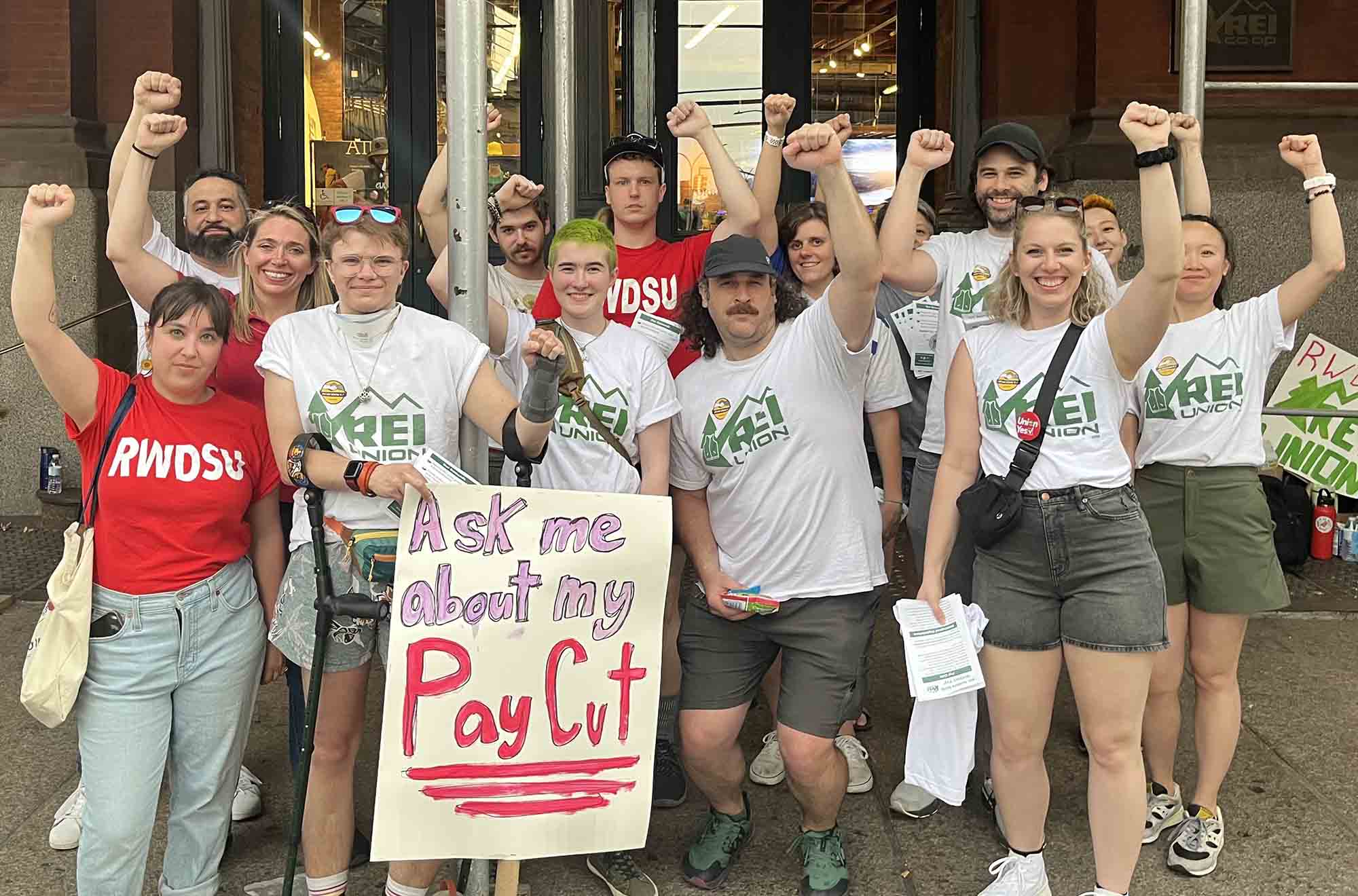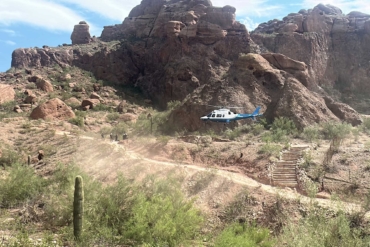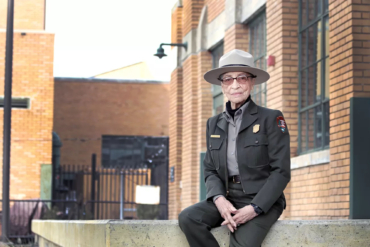North Carolina’s Blue Ridge Parkway is “basically a nightmare” for labor unions. That’s according to organizers with the AFL-CIO, who faced a tough fight in 2023 to gain representation of all 160 workers stretched across the National Park’s 469 miles of mountain terrain.
It’s difficult to meet with all the park’s workers when you can only talk to a few of them every few miles.
“On the parkway, you meet four to five people then drive 50 miles for the next couple people,” said Kevin Droste, an organizer with the AFL-CIO. “You never get to meet 30-40 people at a time. It’s always a couple of guys here and a couple of guys there.”
That wasn’t the only difficulty. An anti-union group called The National Right to Work Foundation tried to stymie efforts to increase labor representation in the park. “Union officials in both the public and private sectors want to maintain their coercive grip on workplaces across the country,” the group’s president, Mark Mix, said at the time.
Organizers said that echoed the sentiment of many workers in that part of the country, who have negative perceptions of labor unions.
Yet in a July 2023 vote, nearly 90% of the park’s workers decided to join the American Federation of Government Employees (AFGE), an affiliate of the AFL-CIO.
“To see a bunch of southern boys in the mountains of North Carolina vote for a union contract — it was pretty amazing,” said Brandee Morris, another AFL-CIO organizer. “They voted pretty much unanimously.”
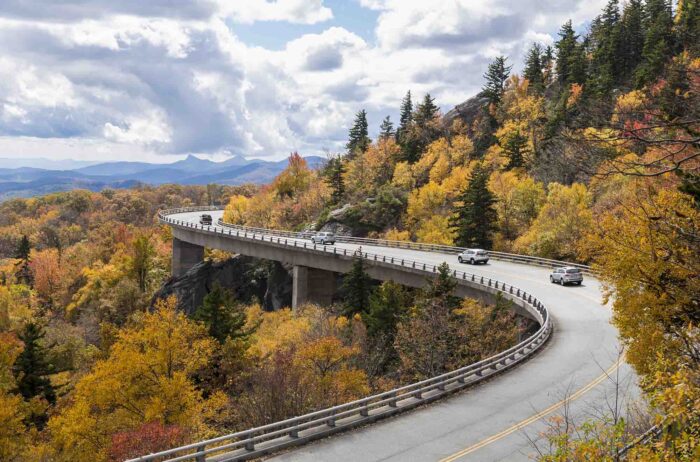
Across the country, labor unions experienced a banner year in 2023, with major wins for workers in the auto industry, healthcare, and Hollywood. As the outdoor industry grew to $1 trillion, many workers in this diverse segment of the economy joined the movement.
Several REI locations also went on strike and joined the company’s growing list of unionized stores. More climbing gyms unionized after the first-ever climbing union formed in 2022. And Yellowstone National Park decided to unionize this year — as did ski patrollers facing skyrocketing housing costs.
The seasonal nature of many outdoor jobs, tied with the sense that “fun work” in nature justifies less pay, has long made organizing the industry difficult. But in nearly a dozen interviews with labor organizers, educators, and industry leaders, it’s clear that many young workers now demand better pay, benefits, and representation.
“It’s a part of the changing sentiment toward unionization that we’ve been seeing for the last four years now,” said Richard Minter, vice president and organizing director for Workers United. “I’ve talked to workers who have broken down and talked about seeing their parents marginalized at work … They’re refusing to accept the same thing.”
Who Needs a Union, Anyway?
While labor organizers will usually say that everyone needs a union, it’s clear that workers in the outdoor industry often face uncommon problems for the rest of the country’s workforce.
At Blue Ridge Parkway, for example, Morris has helped a road worker obtain workers’ compensation after contracting Lyme disease — a condition he’ll have for the rest of his life. In another case, a law enforcement officer witnessed a man kill his young daughter and then himself. He needed professional help to recover, which Morris made happen through his membership with the AFGE.
“There’s often a perception that outdoor workers should just be grateful to work in a beautiful place,” Morris said. “But being outdoors is just a whole different animal from the safety of many indoor jobs.”
Organizing in the outdoor industry often remains difficult simply because the definition of an “outdoor job” is so hard to pin down. Often, outdoor jobs aren’t part of large companies that are easier to organize, such as the healthcare or retail industries. A ski patroller in a small Colorado town might be unaware that he’s in a similar work situation as the trail guide a few miles away.
Even before COVID, organizing wasn’t easy. But then the pandemic happened: “Covid changed everything,” said Kevin Droste, another organizer with the AFL-CIO.
“A lot of people didn’t have a union fighting for them. So when their boss came and said, ‘You’re not working for the next three months, good luck to ya,’ they didn’t know what to do,” Droste said. “Or people saw their neighbor working 18 jobs to survive. That was a spark.”
The pandemic brought other changes, also. Housing and food prices continued to soar as many Americans struggled to find work or afford healthcare.
Workers in many industries started organizing when the economy finally started recovering from prolonged quarantine. That culminated in 2023, or “the year of the strike,” wrote The Wall Street Journal. American Airlines pilots successfully negotiated for 46% wage increases over 4 years. UPS drivers won pay raises of $7.50 an hour over 5 years. Other victories have followed for teachers, nurses, and writers.
Now, outdoor workers fed up with a lack of representation have started replicating those labor successes in their industry. Outdoor recreation has surged with the end of social distancing restrictions, and workers say it’s time to demand fair compensation — if only so they can keep doing the jobs they love.
“Word is spreading. The fire is catching,” Morris said. “I’m loving watching this labor movement.”
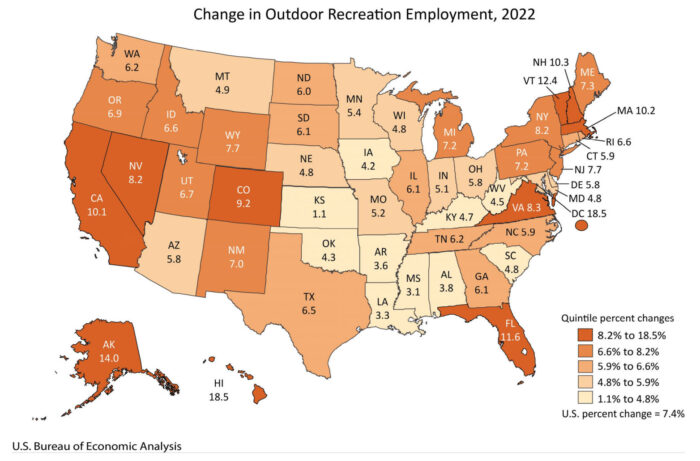
Record Profits, but Little Mention of Workers
In November, the U.S. Department of Commerce released new data about the outdoor industry collected from 2022.
The results showed the industry is booming. In fact, the outdoor industry more than doubled its growth (4.9%) compared to the U.S. economy in general (1.9%). It’s now responsible for $1.1 trillion in economic output (2.2% of GDP), 5 million jobs, and 3.2% of all U.S. employees, findings showed.
A few weeks later, the Outdoor Recreation Roundtable (ORR), representing the outdoor industry, leveraged the report when testifying to Congress. They argued in favor of a massive bill to improve outdoor access.
But at the national level, there’s little discussion about greater representation of workers within the outdoor workforce. While ORR offers some important resources, like a Workforce Hub with info on job advancement, there are very few organizations dedicated to the interests of outdoor workers.
In 3 decades with Workers United, Minter said he’s seen the same trend play out over and over again.
“Whether it’s in the outdoor industry or in the retail industry, these growth spurts often leave behind the workers who made that happen,” Minter said. “Somewhere along that journey, workers are involved and should be recognized.”

In many parts of the outdoor industry, there’s a lack of conversation about workers’ rights. Despite many examples of the past 2 years, “no one has brought that up” in meetings of the American Mountain Guides Association or The Access Fund, said Bryon Harvison, the director of policy and government affairs for the American Alpine Club.
“There’s clearly a salary differential in the outdoor industry for how much fun you have,” Harvison said. “I also think there’s a component of young folks cutting their teeth and getting their first experiences.”
That’s part of why some outdoor industry leaders believe there’s a disparity between pay and benefits in their jobs versus similar positions in the rest of the economy.
“I would like to see data on whether or not the salaries have increased since the pandemic,” Harvison said. “I get the feeling that it hasn’t moved up.”
Unfortunately, it’s hard to answer that question, according to the industry experts at Outdoor Recreation Roundtable (ORR). According to ORR vice president for programs Chris Perkins, gathering more “granular” data about changing compensation for specific jobs should be a priority of the industry.
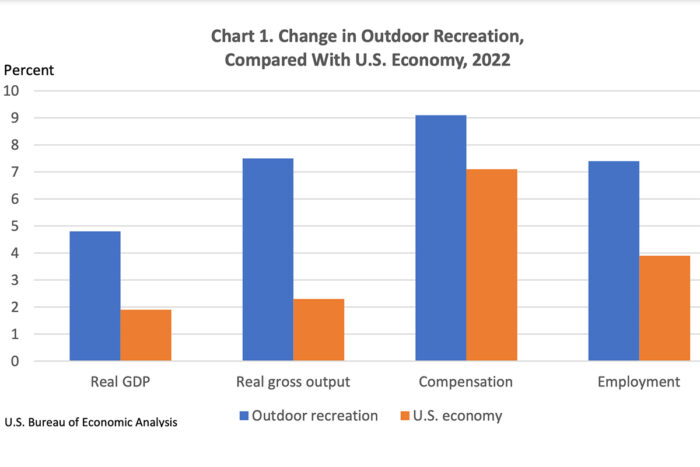
But at least some of the industry’s recent profits have gone to workers. In 2022, the total amount of compensation given to outdoor workers increased by 9%, compared to 7% for the U.S. economy overall, according to a U.S. Department of Commerce report.
Beyond that, it’s difficult to see what that means for a river guide or a sales manager, Perkins said. That number only reflects pay to employees, and doesn’t include the many contractors who make a living in America’s wild places.
“I’m not aware of a national organization that advocates for outdoor workers. It would be difficult to organize across all the segments,” Perkins said. “It’s just such a young industry that organizations like that have yet to develop.”
Americans Divided on Actually Joining Unions
More Americans than ever before support labor unions. But that doesn’t mean they want to join them.
Americans’ approval of labor unions has reached its highest level since 1965, according to a 2022 Gallup poll. About 71% of Americans said they support increased union representation, up from 64% before the pandemic.
However, “support” doesn’t always translate into explicit interest. In the same Gallup poll, 58% of non-union workers in the U.S. said they’re “not interested at all” in joining a union. Only about one in 10 say they’re “extremely interested.”
And even with the many wins for the labor movement in 2023, the overall share of union-represented workers still declined slightly, from 11.3% to 11.2%, according to the Economic Policy Institute.
So it’s a paradoxical moment for labor: high popularity with low participation. For many companies — especially those with a progressive public profile — that means balancing a growing labor movement and the many Americans who remain disinterested in signing up for a union.
“It is a challenging environment for employers — and many are pushing back against unionization efforts despite unions’ improved public image,” Gallup said in a poll summary.
For unions to ever make a true comeback, American leaders would have to make major policy changes, Suresh Naidu, an economist at Columbia University, told NPR. That could mean imposing penalties on anti-union companies or increasing incentives for workers to join unions, he said. Without those bigger changes, these smaller unionizing examples may never make a sizable impact on the rest of the American economy.
“I would have zero hope if it was not for the Starbucks and Amazon stories,” Naidu said. “But now I have some hope.”
For service workers at those mega-companies — as well as in the outdoor industry — it’s a tougher battle. Several issues, including many temporary workers and smaller workplaces, make organizing even more difficult.

The Fight for Change in Service Jobs
While there have been some notable unionizations on the local level, such as with ski patrollers, many of the larger union victories in 2023 happened at organizations with bigger chunks of workers in the same place.
That’s most evident at REI stores and climbing gyms, where outdoorsy Americans find retail and service work — far different from the isolated guides and patrollers of wilderness areas. What ties them all together is the feeling that working in the context of outdoor recreation means they shouldn’t need representation, according to organizers at climbing gyms and REI locations.
Climbing gyms, for example, have exploded in popularity in recent years. That has resulted in larger corporate entities farther removed from the workers who created the sense of community that attracted more and more members, said Aaron Vanek, an employee and union organizer at Vital Climbing Gym in New York City.
“Anytime you see organizing, it’s a reaction to the consolidation of power of moneyed interests, and climbing is no exception,” Vanek said. “Our goal is just to be able to afford to pay rent.”
Owners of Vital Climbing Gyms declined to comment on the unionized rock gym.
Across the U.S., four climbing gyms have now unionized, resulting in a new Climbers United group that’s part of the nationwide Workers United. Organizers are currently in negotiations to unionize another 19 climbing gyms shortly.
A similar sentiment came from Steve Buckley, who helped organize a walkout in September of REI’s flagship store in SoHo, New York City. About 100 workers left the store during peak hours on Labor Day weekend.
“This is a moment of time when the outdoor industry is due for a little bit of a reckoning,” Buckley said. “We’re jumping from job to job to make a living while holding up a huge industry.”

Eight REI stores have now unionized and joined together in a national fight against the long-beloved co-op, whose CEO, Eric Artz, has said a unionized REI is not “the right thing.” The company saw record profits after the pandemic, but that didn’t result in greater investment in workers, Buckley added.
“Workers across the outdoor industry are ready to address the economic disparity that we’ve experienced for so long,” Buckley said. “Throughout the pandemic, the outdoor industry’s workers took a really big hit. We saw a lot of our employee benefits taken away. We love to get people outside and celebrate that life outside — but it came at the cost of less employee protections.”
REI representatives, however, said the company has reinvested in workers in recent years. In 2022, they pointed to $50 million in competitive pay adjustments, $92.3 million in employee retirement and incentives, and a new plan for providing healthcare for all employees.
“REI is committed and engaged in good-faith bargaining with stores that have chosen union representation and will continue to participate fully in the negotiating process,” a spokesperson said.
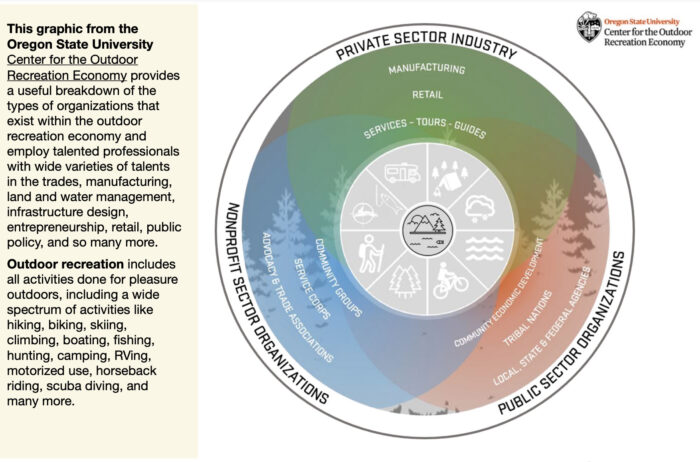
Movement Grows Despite Lack of Support
Even without national support, small groups of outdoor workers have managed to organize for improved pay and conditions.
Since Breckenridge ski patrollers first unionized in 2021, four more Colorado resorts have seen unions form. In December 2023, Vail Resorts signed a new contract with the union, once again resulting in improved pay for patrollers facing skyrocketing living costs in Colorado’s mountain towns.
Covid underscored the need for change, Breckenridge Ski Patrol Union President Ryan Dineen told Summit Daily. And now he sees a positive trend in Vail Resorts’ willingness to discuss solutions for its workers.
“As we get to 2024, the tide is shifting, and we want to be part of that shift,” he said.
It’s an impressive turnaround considering the patrollers organized without the help of a national group, said Stephanie Cox, the National Ski Patrol executive director.
“We know the challenges of housing and living wage, and we’re deeply empathetic to that,” Cox said. “Their power is really at the local level … I think they’re doing pretty well considering there’s not necessarily an organization lobbying for their interests.”
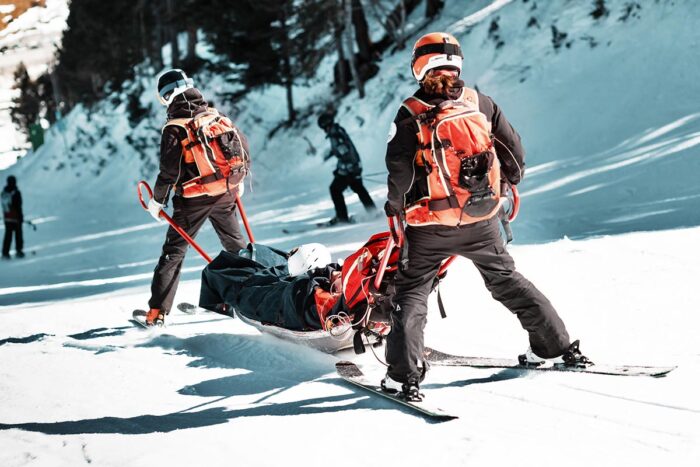
For Droste, who’s been fighting for union representation for decades, modern organizing echoes the same trends that drove labor successes in the 1960s.
Back then, much of the countercultural movement was fueled by people from privileged backgrounds. They were primarily middle-class people who “didn’t want mommy and daddy’s life,” he said.
“It’s a repeat with young people today,” Droste said. “They’re thinking, ‘Maybe there’s some other way to do this. Maybe unions are the answer.’”
Vanek of Climbers United agreed that young workers have become more political. But it’s not just about their cultural and economic backgrounds. It’s also a reaction to the rising awareness of environmental issues threatening their future.
“As things like climate change ramp up and threaten our access to being outside, people are realizing that this is something we need to fight for,” she said.
Requests for additional comment on this story were sent to the Right to Work Legal Defense Foundation and employers at Vital Climbing Gym, Vail Resorts, and REI. They declined to respond.
